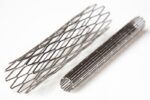IABP-SHOCK II: Intra-aortic balloon use impact on 30-day mortality in patients with cardiogenic shock. Holger Thiele2012-08-26 Original title: IABP-SHOCK II: Randomized comparison of intraaortic balloon counterpulsation versus optimal medical therapy in addition to early revascularization in acute myocardial infarction complicated by cardiogenic shock
FAST MI: AMI improved the survival associated with the clinical characteristics changes of patients in the French National Registry.
Presentation Summary: The French National Registry included patients admitted with acute myocardial infarction between 1995 and 2010 (n = 6707). Over time, authors noted a reduction in the age of presentation, especially in women under 60 years with increased incidence of smoking and obesity. Pain-center time was significantly reduced, while increasing the number of patients<a href="https://solaci.org/en/2015/06/24/fast-mi-ami-improved-the-survival-associated-with-the-clinical-characteristics-changes-of-patients-in-the-french-national-registry/" title="Read more" >...</a>
SWISS AMI: Stem cells infusion after primary angioplasty
The trial enrolled 200 patients post AMI treated with successful PCI, with LVEF ≤45% randomized to placebo, to receive early (before 7 days) or late (after 7 days) stem cells infusion. Primary end point was LVEF at 4 months. At follow up, stem cells infusion, both early and late, did not improve LVEF, compared to<a href="https://solaci.org/en/2015/06/24/swiss-ami-stem-cells-infusion-after-primary-angioplasty/" title="Read more" >...</a>
STREAM trial: It is time to check out facilitated angioplasty?
It is not clear so far whether pre-hospital fibrinolysis with early angiography could provide a clinical outcome similar to primary percutaneous coronary intervention (PCI) for acute myocardial infarction (AMI). This study included 1,892 patients who presented within three hours of symptom onset and who could not undergo primary angioplasty within the first hour. Patients were<a href="https://solaci.org/en/2015/06/24/stream-trial-it-is-time-to-check-out-facilitated-angioplasty/" title="Read more" >...</a>
PRAGUE 19: bioabsorbable platform for patients with ST segment elevation
Absorbable bioplatforms are considered safe and effective in stable patients but their use in the context of acute myocardial infarction with ST segment elevation has not been reported. Low risk of heart attack with low Killip classification could be the stage for this device. 87 consecutive patients experiencing myocardial infarction with ST elevation underwent primary<a href="https://solaci.org/en/2015/06/24/prague-19-bioabsorbable-platform-for-patients-with-st-segment-elevation/" title="Read more" >...</a>
GIANT: Evaluation of the genetic profile of CYP2C19 in patients undergoing primary angioplasty
The aim of this study was to evaluate the clinical impact resistance thienopyridines through genetic analysis of CYP2C19 receptor. The primary endpoint was a combination of mortality, myocardial infarction, stent thrombosis in the resistance group (few responders) versus non-resistant (responders) to the thienopyridines. 1445 patients were included of which 22% were considered few responders. There<a href="https://solaci.org/en/2015/06/24/giant-evaluation-of-the-genetic-profile-of-cyp2c19-in-patients-undergoing-primary-angioplasty/" title="Read more" >...</a>
Hokusai-VTE: Endoxaban shows solid results versus warfarin in venous thromboembolism .
The venous thromboembolism is the third most common cardiovascular disease after acute myocardial infarction and stroke . Usual treatment is to use low molecular weight heparin followed by vitamin K antagonists Other studies have shown that the new oral anticoagulants with or without initial heparin are effective alternatives. The endoxaban is a direct Factor Xa<a href="https://solaci.org/en/2015/06/24/hokusai-vte-endoxaban-shows-solid-results-versus-warfarin-in-venous-thromboembolism/" title="Read more" >...</a>
Impella 2.5 improves survival in AMI with cardiogenic shock
Original title: The Use of Impella 2.5 in Severe Refractory Cardiogenic Shock Complicating and Acute Myocardial Infarction. Reference: Frederic Casassus et al. J Interv Cardiol. 2015 Feb;28(1):41-50. The presence of cardiogenic shock is observed in 7% of patients undergoing acute myocardial infarction (AMI) with ST segment elevation and 2.5% of those with non-ST AMI. In this scenario inotropic<a href="https://solaci.org/en/2015/04/29/impella-2-5-improves-survival-in-ami-with-cardiogenic-shock/" title="Read more" >...</a>
Clinical presentation of restenosis in the three generations of DES
Original title: Clinical Presentation and Outcomes of Coronary In-Stent Restenosis Across 3-Stent Generations. Reference: Marco A. Magalhaes et al. Circ Cardiovasc Interv. 2014;7:00-00. Studies evaluating the clinical presentation of restenosis after implantation of bare metal stent showed that the recurrence of stenosis is not a benign complication as previously thought, with a significant number of patients with restenosis<a href="https://solaci.org/en/2015/04/28/clinical-presentation-of-restenosis-in-the-three-generations-of-des/" title="Read more" >...</a>
Risks and benefits of extending dual antiplatelet therapy in patients with and without MI
Original title: Benefits and Risks of Extended Duration Dual Antiplatelet Therapy after PCI in Patients With and Without Acute Myocardial Infarction. The DAPT Study. Reference: Robert W. Yeh et al. J Am Coll Cardiol. 2015, online before print. The risks and benefits of prolonged antiplatelet therapy after PCI could be different in patients presenting with AMI compared to<a href="https://solaci.org/en/2015/04/21/risks-and-benefits-of-extending-dual-antiplatelet-therapy-in-patients-with-and-without-mi/" title="Read more" >...</a>









